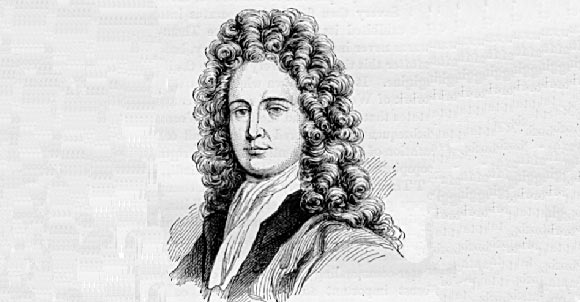Thomas Savery invented “Steam engine”.
Thomas Savery was an English inventor credited with making important advancements and discoveries in the development of the steam engine. He was born in 1650 at Shilston and belonged to a well-known family of Devonshire. He received a thorough education and was fond of mathematics, mechanics, and philosophy. He spent a great deal of time performing experiments and engineering new types of equipment for use in his experiments. Savery chose the profession of military engineering and achieved considerable success, rising to the rank of captain.
Thomas Savery invented various types of devices such as a machine for polishing glass and marble, and paddle wheels for rowing ships and boats with ease. Not all his inventions were well recognized though. The paddle wheels were rejected by the Admiral of the Navy based on a negative recommendation given by the Navy Surveyor at that time. He also worked for the “Sick and Hurt Commissioners” which was a body responsible for taking care of sick and wounded seamen. Savery contracted the supply of medicines to this organization and often traveled to Dartmouth for this purpose. There he met Thomas Newcomen, another English inventor associated with the development of the first practical steam engine.
At that time, England was facing a severe shortage of timber. Most of the timber from forestry was being used for shipbuilding and firewood. Therefore, coal was replaced with firewood as often as possible. However, this meant digging deeper into coal mines which led to the possibility of water seeping into the mines. In 1698, Savery patented a steam engine known as the “Miner’s friend” after presenting the same to the “Royal Society of London”. This engine consisted of a vessel filled with water into which high pressure steam was introduced. By heating and cooling the water, this machine produced a vacuum that sucked in water from the mines below. Savery’s original patent was for 14 years but was extended due to the “Fire Engine Act” passed by Parliament in his favor, which extended the life of a patent from 14 years to a further 21 years.
Thomas Savery began to widely advertise his product and wrote a prospectus titled “Miner’s friend” or “A Description of An Engine to Raise Water by Fire”. He circulated this to businessmen in order to attract interest towards his invention and explained the working behind the machine to anyone who was interested. At that time the cost of removing water from mines was exponentially high and often rendered the entire project too costly to be profitable. Savery intended to replace traditional methods of pumping water out of mines with his machine in order to save costs. However, Savery’s steam engine had many serious issues and did not achieve the kind of commercial success in the mining industry that he had hoped for. The biggest obstruction to the success of Savery’s machine was the danger of steam boiler explosions which were often fatal when they occurred.
Although Savery’s engine had many limitations, this was nevertheless the first practical advancement in the actual construction of a steam engine. Other similar experiments had been conducted previously but Savery expended the time, money, and effort to develop a working model. Savery’s steam engine was the inspiration for later developments in the field. Thomas Newcomen, among other inventors, used Savery’s ideas to develop a more advanced model that overcame the difficulties and shortcomings of the original.
